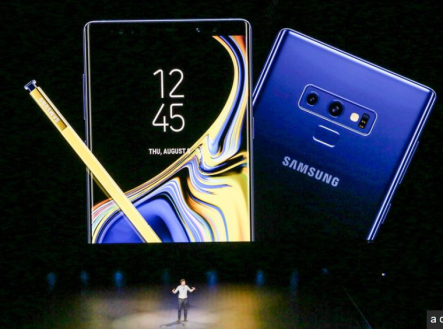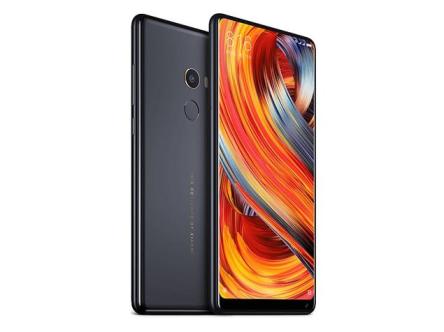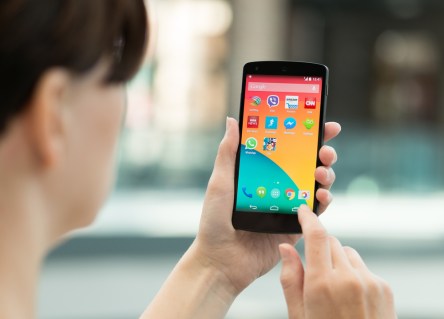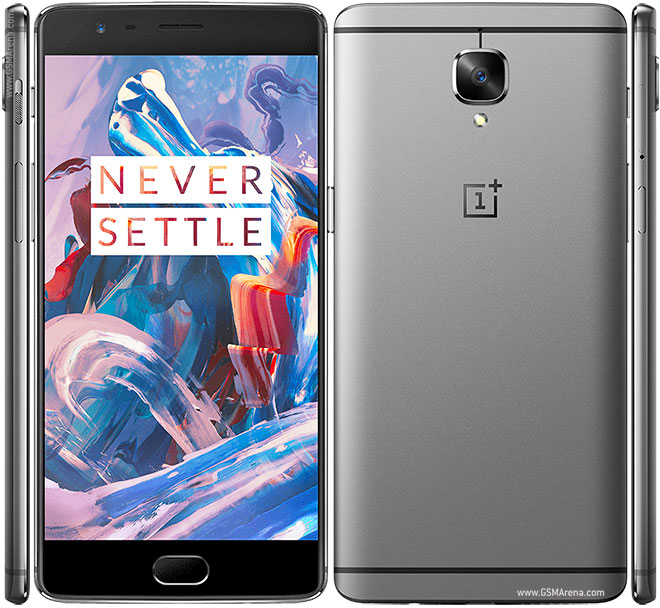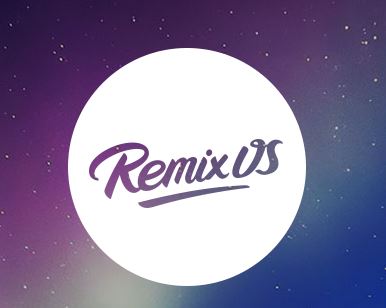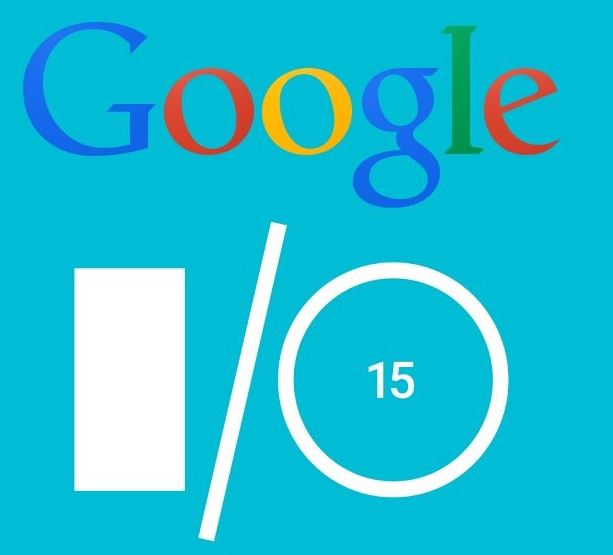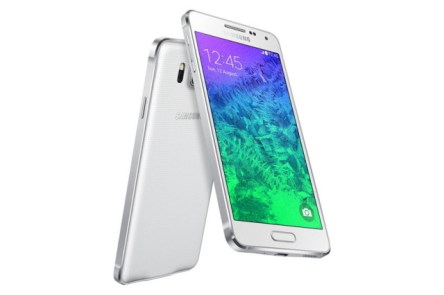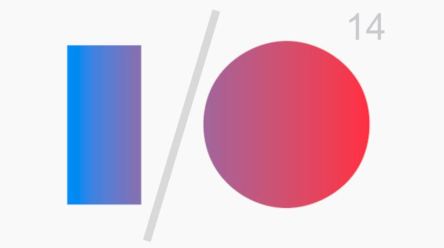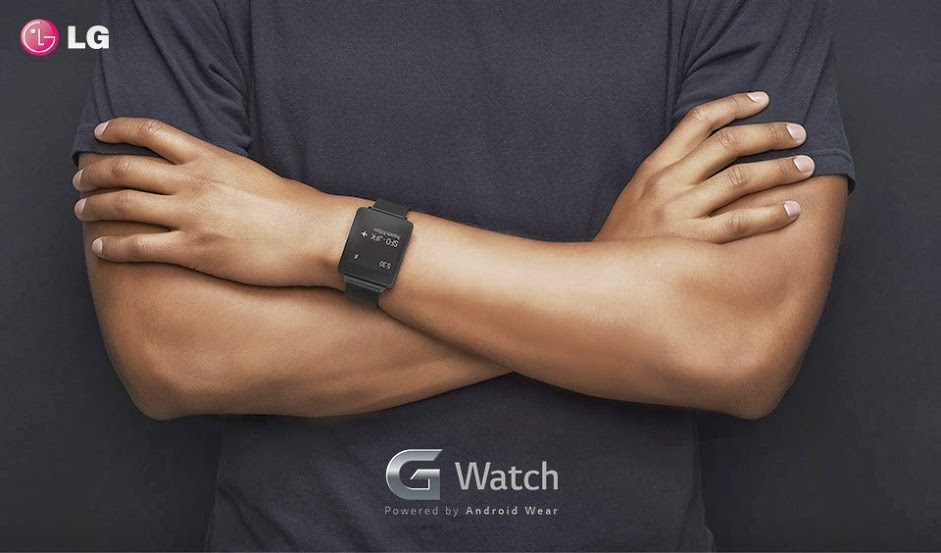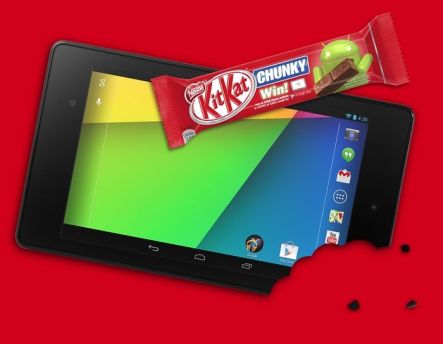Samsung’s annual product conference gathered a big crowd in Brooklyn last week. The main focus was on productivity and performance upgrades across Samsung’s entire collection of devices. The most anticipated gadget was the company’s phablet, Galaxy Note 9. On the exterior, not much has changed, but under the hood some upgrades took place, including a bigger battery, an even bigger screen (6.4-inch) and a more potent S Pen. Additionally, Samsung’s DeX software is now built into the phone, which means that the phone now can be plugged into any external display for a desktop-like experience. Available in two configurations—a 128GB/6GB RAM model for $999, and a 512GB/8GB RAM for $1,250, the phone will start shipping later this month. Design wise, the rear fingerprint sensor was relocated below the camera, but everything else is still in its place: water resistance is still a feature, as is fast wireless charging, expandable microSD storage, the Bixby button and the mighty headphone jack. What’s most baffling about this device is the storage capacity—add a 512GB microSD card into a 512GB Note 9 and you’ll have 1TB of storage and that is pretty insane. Galaxy Note 9 will run on Android 8.1 Oreo without any changes from the user experience on previous phone versions. The battery, a hot topic in Samsung’s world, has been increased to 4,000mAh, the largest so far in a Note. To keep their customers’ cool related to battery safety, Samsung has validated and certified its new batch of batteries through outside companies as well as in house. The heart of the Note 9 is a Qualcomm Snapdragon 845 processor with new optimization to the GPU. A pretty cool feature we still don’t know too much about is the Water Carbon Cooling system, but it sounds...
Xiaomi Mi Mix 2S
Takes on iPhone X
Imitation is the sincerest form of flattery, they say, but I doubt Apple is pleased with the compliment Xiaomi has been paying since it launched its first smartphone back in 2011. Since then, the little rice (Xiaomi’s translation from Mandarin) grew into a solid 12.4 percent market share in China’s smartphone market. Chances are its growth will be boosted this year, with the help of the recently launched Xiaomi Mi Mix 2S. This Android-powered Apple-looking device is the company’s latest flagship smartphone. Design-wise, the Mi Mix 2S didn’t change from the version launched about half a year ago, and it’s understandable as it holds several design awards. The change happened under the hood, as it more often should. Back to the design features, the device looks exactly the same as its predecessor when regarded from the front—the 6-inch, full HD plus LCD display with 18:9 ratio and 1080p resolution and trim bezels on the side and top is unchanged, as is the 5-megapixel front camera, still placed in that awkward position at the bottom right corner of the device. The fingerprint sensor is still placed on the back. Mi Mix 2S is also made of ceramic with aluminum, but the company is interested in producing a full-ceramic edition, just as it did with the previous version; the color-scheme is minimal: black with gold trim and white with silver trim. On the back, there’s another story: the new dual-camera system replaced the single module and has been moved to the top left corner, mirroring iPhone X’s design. The camera system consists of two 12-megapixel sensors—one behind the wide-angle lens and the other behind a telephoto lens. The system features dual-pixel autofocus, four-axis optical image stabilization and Sony’s IMKX363 sensor with an F/1.8 aperture and 1.4-micron...
Trojan Apps
Tech Security
Google has eliminated 300 apps from its online store after discovering a secret plugin silently installed across several Android devices. The seemingly innocuous apps were all secretly outfitted with the WiredX botnet. WiredX commandeers vulnerable Android phones and tablets, using the gadgets to kick off a DD0S attack. While Google does not yet have an official account of just how many devices currently host the WiredX botnet, Chad Seaman, a senior engineer at Akamai, a cyber security firm, estimates the number could reach 70,000 or more. “I know in the cases where we pulled data out of our platform for the people being targeted we saw 130,000 to 160,000 (unique Internet addresses) involved in the attack,” said Seaman. Silent, but Deadly The initial WiredX outbreak occurred on August 17th, when several Content Delivery Networks (CDNS) reported similar DDoS attacks. A search for the source eventually landed at the doorstep of Google’s Play Store, prompting the tech firm to pull hundreds of affected applications from its store and initiate procedures to remove the malware from infected devices. “We identified approximately 300 apps associated with the issue, blocked them from the Play Store, and we’re in the process of removing them from all affected devices,” a Google spokesperson said. “The researchers’ findings, combined with our own analysis, have enabled us to better protect Android users, everywhere.” The apps chosen to host the plugin provided genuine services, like ringtones and video players, but included hidden malware designed to commandeer the device for potential DDoS attacks. Once powered on, any infected phone or tablet mainly served as a soldier in a broader DDoS army – all unbeknownst to the user. While the apps themselves operated as promised, the malware surreptitiously connected to an internet server run by the WiredX...
Meet Pixel
Google's First Phone
Google has finally launched its own smartphone, the Pixel, and aimed it directly at Apple. The search giant is keen on showing what a premium Android can do when the hardware is tailored to the software by those who actually make it. Following the Nexus line, Pixel is now 100 percent Google, and even though HTC is the firm that has actually built the device, Google has made all the decisions on what goes into it and how it operates. The smartphone joins the Pixel C Android tablet and Chromebook Pixel as Google’s first in-house devices. Pixel shows off an all-metal body with an all-glass display, fingerprint scanner on the back and headphone socket, but lacks the waterproof feature. It brings a slightly different look with its glass panel covering the top third of the back and the wedge-shape, thicker at the top where the camera is placed. Its curved edges and flat sides make it easy to grip and surprisingly at first, the wedge shape gives it good weight distribution. At the bottom lies the USB-C port flanked by two grilles—one is a speaker and the other is hiding the microphone. It comes in three colors—Quite Black, Very Silver and Really Blue; the last one is a limited-edition option and Google still has to reveal how one can get hold of it. The smartphone exposes its abilities through a 5-inch full HD AMOLED screen on the front that’s crisp and vibrant, with rich blacks and pretty good viewing angles. Moreover, the device is Daydream VR-ready, which means it supports Google’s new virtual reality platform. However, for some, the excitement over this feature is somewhat shadowed by the fact that the display isn’t optimal for VR. Pixel is one of the first handsets to...
OnePlus 3
Android with OxygenOS
OnePlus is no longer a new name on the market. The Chinese manufacturer premiered in 2014 with its first handset, followed up by last year’s OnePlus 2 and the even more budget-friendly OnePlus X. Now OnePlus 3 takes the center stage and so far, the premise is better than before—Oppo dropped the invitation system so that everyone can use their money to purchase it. Design OnePlus 3 doesn’t look bad with its curves and contours. It’s a grown-up, solid device that comes in an elegant aluminum unibody—a great and durable upgrade over the plastic-clad and glass-backed precursor versions. The design doesn’t bring anything new or original per se, in fact, the body looks a lot like that of an HTC phone. The only inelegant feature of the device is the raised camera lens, but it doesn’t damage too badly the overall design. The home button doubles as a fingerprint reader, something we’re seeing more and more now that Android Marshmallow included native support for them. There is no water resistance or some other protection from the elements, if in case you were wondering. A somewhat bizarre feature is the three-position notification switch on the side. It corresponds to the three modes of Android’s notifications: silent, priority-only and all notifications. The switch seems to be the only way to change notification modes on the OnePlus 3 (there is no software method), thus making it a “hard lock” into whatever mode the user chooses. The back plate cannot be swapped as with the OnePlus 2; if you’re interested in changing the way your phone presents itself, you can order official slim cases from OnePlus—bamboo, black apricot, carbon fiber and rosewood are among those available. Hardware What puts OnePlus 3 in the spotlight though is not the...
Remix OS
Alpha to Beta update
The Mobile World Congress in Barcelona had many attractions this year. Among them, Remix OS in beta, now available for download. The alpha version of product was introduced earlier this year at CES. It’s an Android fork with desktop features that can run on pretty much any x86 computer. Work on the Androidx86 Open Source Project started in 2009 with the initiative of computer engineer Chih-Wei Huang. Over time, the project lead to an official partnership with Jide Technology. The foundation of Remix OS for PC is a custom engineered version of Android Lollipop – Remix OS 2.0. The Google Play Store in not pre-loaded onto the OS, as the Jide is still waiting for Google’s approval to directly integrate Google Play Services and the Play Store. These items have been side-loaded at the moment (not optional) and it is a bit of a hassle to test it. However, the company says they are in constant discussion with Google about this and they’re confident they’ll receive full approval later this year. Jide Technology announced the beta version, a more stable build with support for 32-bit hardware and dual-boot support through the new hard drive installer. Moreover, it brings in OTA update options. In other words, users won’t have to worry about losing data (theoretically) when performing an update. Remix takes basic Android and adds all those elements present in any Mac or PC—support for mice and keyboards, a windowed interface, a file manager, system bar and a dock at the bottom of the screen for the apps. Other changes from Alpha to Beta include over 50 major bugs fixed, UEFI support added, and 32-bit support added alongside 64-bit. Remix OS allows users to run Android apps and games such as Clash of Clans, Microsoft...
Google I/O 2015
Keynote Highlights
SAN FRANCISCO – Last week, The Moscone Center West hosted one of the world’s largest games of Pong while Google presented the products and services it’s been brewing up for the past year. At the I/O keynote, Google showed primary focus on optimizing Android, complemented by a new Google Cardboard and a VR camera system that will be sold by GoPro. Also, we’re found out that right now there are out there over 4,000 distinct devices using Android of which you probably only know a few, such as Samsung, LG, Motorola. And Sundar Pichai, senior vice president, announced HBO coming to Google Play. Android M mostly follows its predecessor L, but comes with a few big improvements. App Permissions – is a way to simplify what data you allow the apps to access. Instead of the long list of permissions upon installation, the user will be prompted for permission when the app needs to use a feature, such as microphone or camera. App Links – or Chrome Custom Tabs, is a useful feature that enables developers to add custom components that overlay on top of apps; for instance, Pinterest can add custom transition animation to link to the web, within the app. Furthermore, there’s a new app linking feature that allows apps to verify links to switch from app to app rapidly. Battery & Charging – introduces Doze, a new feature that in Android M uses motion detection to go into a deeper sleep state if inactive for longer periods of time. While dozing, the device will still be able to respond to high-priority messages and alarms. Their test in which a Nexus 9 running on Lollipop against M Nexus showed that the latter lasted up to two times longer in standby, Google claims....
Samsung Galaxy A7
Ready for the "autoselfie"?
I was browsing through images of computers, phones, and smartphones and their transformation over the course of years, when it dawned on me that not only art imitates life, but technology does, too. All of the sudden, my mind was back in the Baroque period, reminiscing the famous paintings of Flemish painter Sir Peter Paul Rubens. The term “Rubenesque” popped into my mind, terminology known by art enthusiasts to be referring to his fondness of painting plus-size women, the beauty standards of those times. And I stared at the world’s first desk computers, at the first phones, at their generous widths. How times change… today’s beauty standards got stuck somewhere at size zero. The ever-skinnier tech devices follow the trend. The latest to enter the scene of skinny devices is Samsung’s Galaxy A7, one of the company’s slimmest smartphones yet, only 6.3mm (0.245 inches) thick that weighs 141g. At first glance, its design makes you think of Apple’s iPhone 5 with its curved edges, metallic band, and silver home button surround. But you’ll soon see the Samsung in it. Samsung Galaxy A7 is attempting to please its followers and to catch the attention of Apple users as well, as “one of the slimmest Galaxy smartphones equipped with premium hardware for a superior social experience, expanding on the popular services provided by the Galaxy A5 and A3.” The hardware on the 5.5-inch smartphone, even though not Samsung’s best, is worthy of attention as it humbles the price along with the technical specifications. A7 comes equipped with two separate quad core processors – 1.8GHz and 1.3GHz or 1.5GHz and 1.0GHz for the dual-SIM version – paired with a 64-bit Qualcomm Snapdragon chip; eight cores should be snappy at handling multiple tasks. Backing up the package are...
Google I/O 2014
The latest and greatest
A wave of announcements flooded Google’s I/O conference this year. The almost three hour keynote included anticipated news, as well as surprises. Gone are the days when technology companies can focus solely on their own products when presenting them. Whenever Google or Apple introduce a new feature, it is instantly compared with the competing counterpart, and the alternative will likely be mentioned with more or less subtlety. Points of comparison are hard to in down as both giants’ mobile platforms seem to resemble one another more and more, in both functionality and purpose: Apple has Continuity between OS X and iOS, and now Google introduced synced notifications between Chrome OS and Android. Apple announced HealthKit and Google presented Google Fit – the mission of both appears to be the development of seamless ecosystems of hardware, software and services that keeps users faithful to one or the other. Here are some highlights from Google’s conference in San Francisco. Android L is the successor to Android Kit-Kat; it was presented as the biggest upgrades ever done to Android. The most noticeable ones are the design changes – the sleek Holo theme of KitKat is being replaced with the colorful new Material Design, a new design language which is based on basic shapes and sheets of paper. Material Design gives developers the ability to add the illusion of depth, featuring a grid-based layout so that it can be easily ported to different screen sizes. L has been deeply integrated with Android Wear platform, fact that allows users unlock their smartphones without a pin code if they are wearing a smartwatch. Notifications received a makeover too, allowing users to respond to notifications directly from the lock screen. Mobile Chrome will take advantage of the Material Design as it...
Android Wear
Truly Wearable Tech from LG, Motorola and Samsung
Google Glass definitely had its appeal. Wearers looked as though they came to us from the future, equipped with endless knowledge and insight thanks to a little lens hovering near their eyeball. That little lens caused some discomfort that has prevented the technology from reaching a broader fan base: is the wearer looking at me? Recording me? Ignoring me for his or her own little cyber world? Intelligent face wear will take much longer to rouse mass support than an amped-up watch, for example. Intelligent watches offer a less confusing alternative to wearable technology since watches don’t place a visual barrier between the user and others. Stepping back from eyewear, Google has made its Android Wear platform available for a variety of companies including LG, Motorola and Samsung. Now, those companies battle to create the next big thing in wearable technology. LG’s newest venture, the G Watch, will offer a 1.65” screen with a 280×280 pixel resolution, 512MB of RAM and 4GB of storage. Time, weather, calendars, and many of your favorite organizing and entertainment apps will be available in an easy-to-use interface. The G Watch is slated for consumer release this summer. Motorola isn’t far behind with the Moto 360 (left). Though the smartwatch is also planned for release this summer, Motorola hasn’t released much information in terms of specs. The only confirmed info is that the Moto 360 will have excellent battery life with wireless charging capabilities and users can choose from a variety of eye-catching (yet office appropriate) colors. Samsung Gear 2 has earned its hype. It’s one of the only products to officially release its specs. Check out the stunning visuals on its 1.63” display with 321 x 320 pixel resolution. Battery-life ranges from 25-150 hours depending on usage but in any case you won’t need to charge it midday (ahem, Sony). Bluetooth 4.0 technology facilitates compatibility across devices while a stellar quality voice command makes it easy to issue demands and make calls on the go. Enjoy several apps that will make staying on top of business and your social life much easier. The downside to releasing Gear 2’s secrets early is that consumers know Gear 2 will lack a keyboard and may hold off buying it until they know what LG and Motorola will offer. The Gear 2 is set for release later this month. How might a smartwatch make your business operations...
Nexus 5 on Kitkat Diet...
Sweet enough?
The Nexus line offered by Google has created a clear identity; behind each version stands the will to make the best, purest, Android-istic phone, at a price that matches what most carriers and manufacturers would charge with a regular two-year contract. On Halloween Google launched Nexus 5 after months of “accidental” leaks, powered by Android 4.4 Kitkat software. The Nexus line represents Google hardware running on Google software, built by a manufacturing partner (LG), but with Google’s involvement in the creation of the hardware. The result is a 5-inch phone, thinner and lighter than the previous version, quite difficult to use for those with small hands. It’s coated in a soft-touch plastic (not the best choice for a premium phone), with a silky texture that provides just enough friction to keep the phone in hand. The backside has a rounded finish that feels nicely in the palm of the hand and the 130g it weights makes it light enough for a one-hand usage. The rear camera in the top left-hand corner looks and feels odd, bulging the surface and acting as prop when the phone is laid down flat, basically left completely unprotected. The screen is full HD IPS Plus LCD that makes text on websites crisp and easily readable, while photos and videos offer details and intense color. Furthermore, the screen’s brightness makes reading in direct light much easier. The technical specifications feature a 2.3 GHz quad-core Qualcomm Snapdragon 800 processor backed by 2GB of RAM, 16 or 32 GB of storage (no micro SD slot for expansion), 8MP rear camera with OIS (optical image stabilization) and a 1.3MP front camera. The HDR (high dynamic range) function helps produce greatly improved detail and color in photos. Based on these, the phone is as...
Mobile OS Race
The race for 3rd place
The mobile ecosystem is constantly making room for innovation and new applications. Smartphone operating systems are racing for market position. At the moment, a duopoly is in place: Linux-based Android, followed closely by Apple’s iOS. The third spot is under contention between Microsoft’s Windows, Blackberry’s Blackberry 10, and Firefox’s Firefox OS. Who will occupy the bronze podium and what’s their impact on the market? Gartner tracks technology shipments and predicts that the worldwide PC market will drop 7.6 percent this year, due to user behavior. Customers are flocking to mobile, an economically favorable alternative to a laptop/PC, and application addiction is very real. Tablets will see a 69.8 percent increase in shipments from 2012 and smartphones will grow from 675 million to 1 billion units, according to Gartner’s data research. Google’s free Android is currently the most popular smartphone OS, holding two thirds of the market. Trying to ensemble the intuitive, easy and delightful experience iOS offers, combined with the power and flexibility of the traditional Windows desktop OS, Android became the “Windows” of mobile operating systems. With multiple manufacturers, each with their own price, quality level, and features, Android is much easier to customize, being extremely flexible. Today there’s a device running on Android for every pocket, purpose, and desire. Apple’s iOS, not even available for licensing, has less than one third of the market; its iOS platform is by far the most polished, prestigious and popular of them all. After all, it’s Apple that kicked off the modern post-PC era. iOS is reliable, its hardware is gorgeous and cutting–edge, and iTunes is the largest library of apps and content. It’s so easy to use an iPad, that everyone can understand how it works, even toddlers. For the average consumer with little to...

